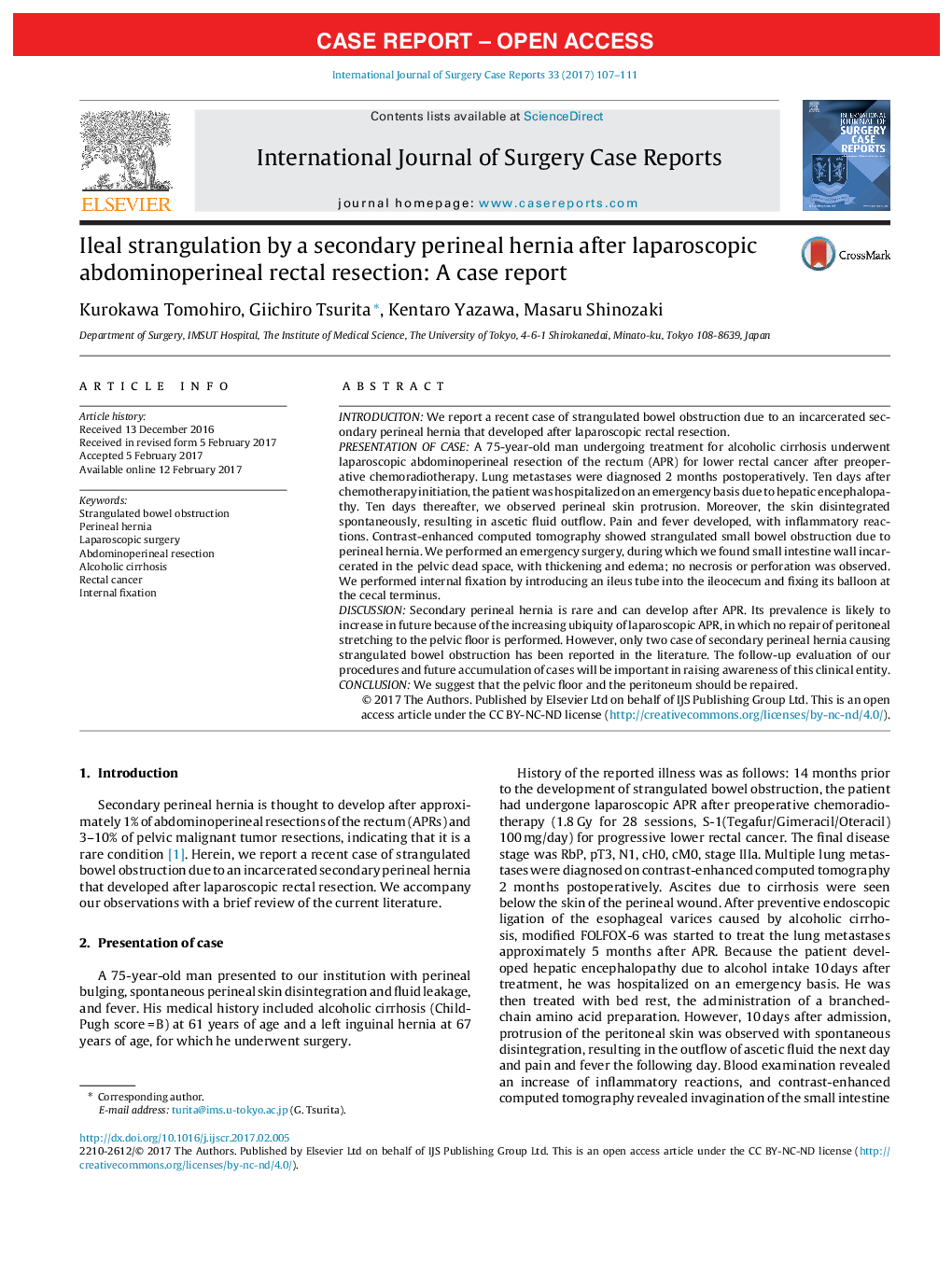| کد مقاله | کد نشریه | سال انتشار | مقاله انگلیسی | نسخه تمام متن |
|---|---|---|---|---|
| 5732878 | 1612081 | 2017 | 5 صفحه PDF | دانلود رایگان |
- Secondary perineal hernia can develop after abdominoperineal resection of the rectum.
- An incarcerated secondary perineal hernia caused strangulated bowel obstruction.
- Wound-healing-delaying factors are the risk factors for perineal hernia development.
- The pelvic floor and peritoneum should be repaired via laparoscopic rectum surgery.
IntroducitonWe report a recent case of strangulated bowel obstruction due to an incarcerated secondary perineal hernia that developed after laparoscopic rectal resection.Presentation of caseA 75-year-old man undergoing treatment for alcoholic cirrhosis underwent laparoscopic abdominoperineal resection of the rectum (APR) for lower rectal cancer after preoperative chemoradiotherapy. Lung metastases were diagnosed 2 months postoperatively. Ten days after chemotherapy initiation, the patient was hospitalized on an emergency basis due to hepatic encephalopathy. Ten days thereafter, we observed perineal skin protrusion. Moreover, the skin disintegrated spontaneously, resulting in ascetic fluid outflow. Pain and fever developed, with inflammatory reactions. Contrast-enhanced computed tomography showed strangulated small bowel obstruction due to perineal hernia. We performed an emergency surgery, during which we found small intestine wall incarcerated in the pelvic dead space, with thickening and edema; no necrosis or perforation was observed. We performed internal fixation by introducing an ileus tube into the ileocecum and fixing its balloon at the cecal terminus.DiscussionSecondary perineal hernia is rare and can develop after APR. Its prevalence is likely to increase in future because of the increasing ubiquity of laparoscopic APR, in which no repair of peritoneal stretching to the pelvic floor is performed. However, only two case of secondary perineal hernia causing strangulated bowel obstruction has been reported in the literature. The follow-up evaluation of our procedures and future accumulation of cases will be important in raising awareness of this clinical entity.ConclusionWe suggest that the pelvic floor and the peritoneum should be repaired.
Journal: International Journal of Surgery Case Reports - Volume 33, 2017, Pages 107-111
